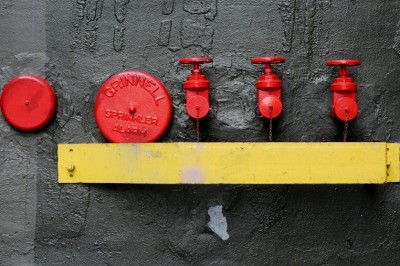Installing Tile in Your Bathroom On Your Own
Tiling a shower is easier than it sounds. This article will explain to you how to tile a shower even if you have never tiled anything in your life. You will obviously need a few tools before you begin. First you should have access to a tile saw to cut your tiles, a notched trowel to apply the thin set and a grout float to apply the grout, tile spacers, thin-set mortar, and grout, either sanded or un-sanded depending upon the application requirements and tile composition.
You should begin by applying your backer-board to the walls and countersinking the screws so that the screw heads are not sticking out to obstruct the tiles from seating perfectly. Once you have your walls up you should figure out a pattern in which you want to lay your tiles. Remember that you want to come up with the best layout that allows for the least amount of cuts for your design. For the purpose of this article I am going to reference tiling strictly the walls, and using 6x6 shower and wall tiles. Once you have a design idea in mind you should then determine how thick of a grout line you want between each tile. For showers the most common spacing is either 1/16th or 1/8th inch. If you are using a glossy tile you will want to remember to get a non-sanded grout so you will not scratch the surface of your tiles.
If you are lying your tiles square up and down instead of on a diagonal you should measure up from the bottom about a 1/8" to allow for a bead of caulk around the base. It is then easiest to measure up the wall the length of a tile plus the thickness of your grout line and make a mark all the way around. It is then best to secure a temporary strip of wood perfectly level all the way around on this line. You can then begin by laying your tile directly on top of that strip of wood allowing you to have a perfectly level row of tiles to begin with. You will come back at the end and remove that strip of wood and finish your bottom row of tiles. Next apply your thin-set to the walls using the notched trowel. If you are using 6x6 tiles or smaller it is best to use a 1/8th notched trowel so as not to overdue the amount of thin-set and allow for a more durable hold. Apply the thin-set evenly as you go remembering not to apply more than you plan on tiling within a few minutes. After your first row of tiles has been applied to the walls with proper spacers in between you can start laying your next row of tiles on top of the previous row and moving them into the proper position base on your spacers. Remember to keep the spacers protruding out from the wall so you can remove them later on. Once you have completed the tile work it is best to let the tile and thin-set to dry overnight.
After your tile and thin-set have dried properly and are pretty much permanent you should mix up your grout till its a peanut butter like consistency. Apply the grout with your grout float and by using a cris-cross motion and applying moderate pressure, float the grout into the grout lines left by your spacers. Allow the grout to dry till a light haze has formed on the tiles and wipe the access grout off with a sponge. Do not use a saturated sponge to clean off the access grout. Finally, stand back and admire your handy work!
I have been remodeling house for 15 years, and I have the secret to getting high qualitykitchen cupboards at an affordable price. Interested in finding out my secret? Follow these links to find out the secret to getting kitchen cabinetry and kitchen cupboards at 30-40% below retail prices
























